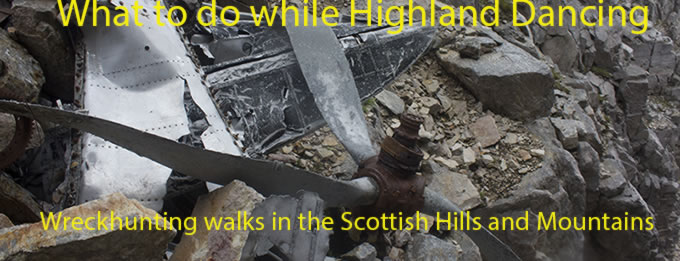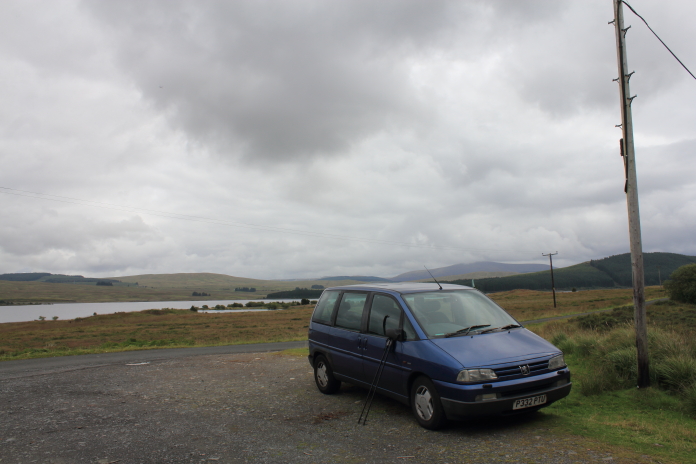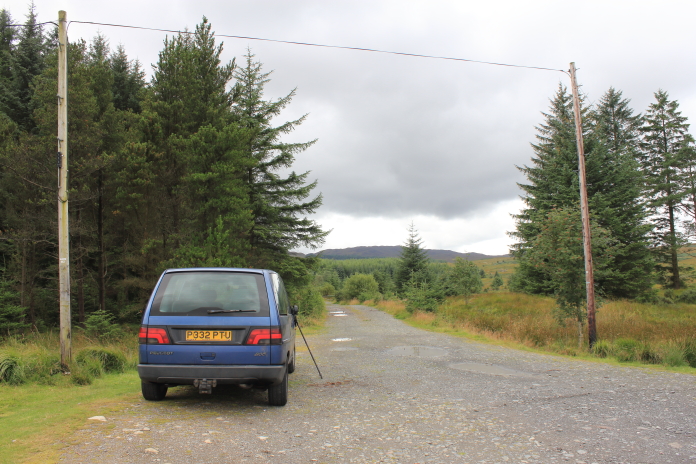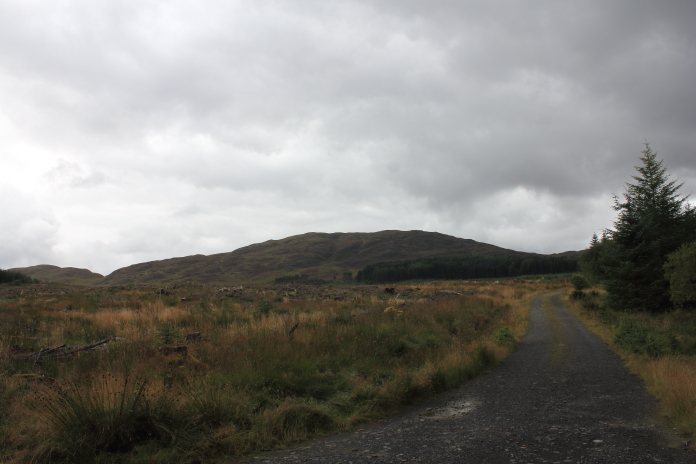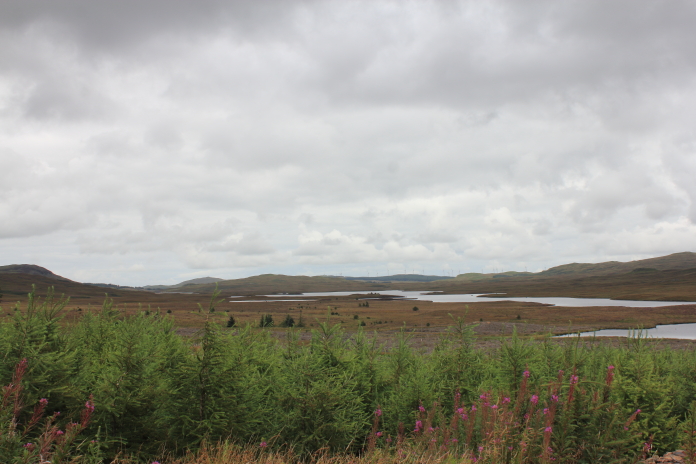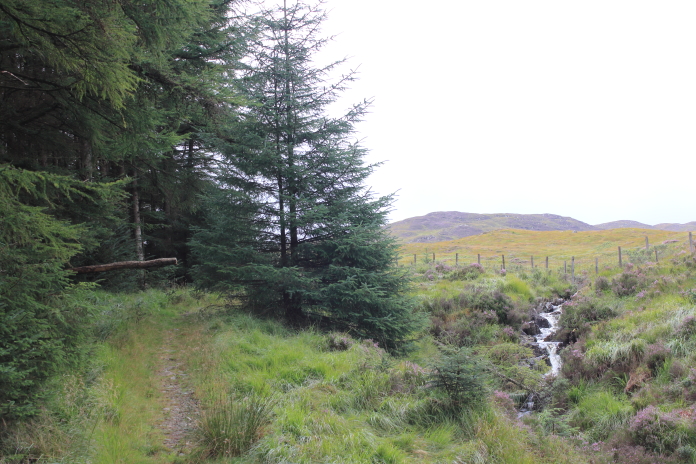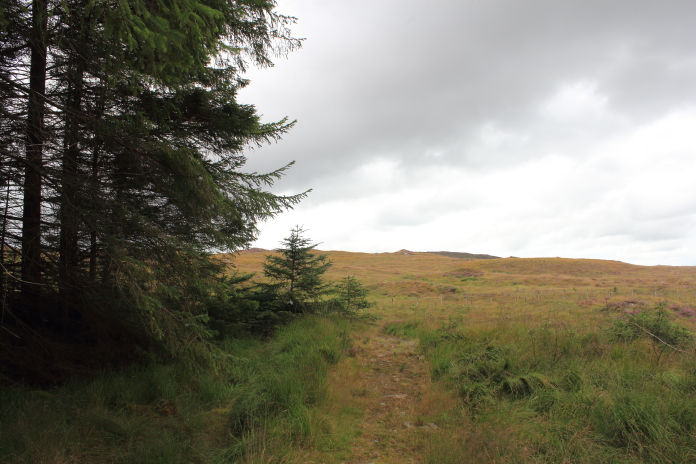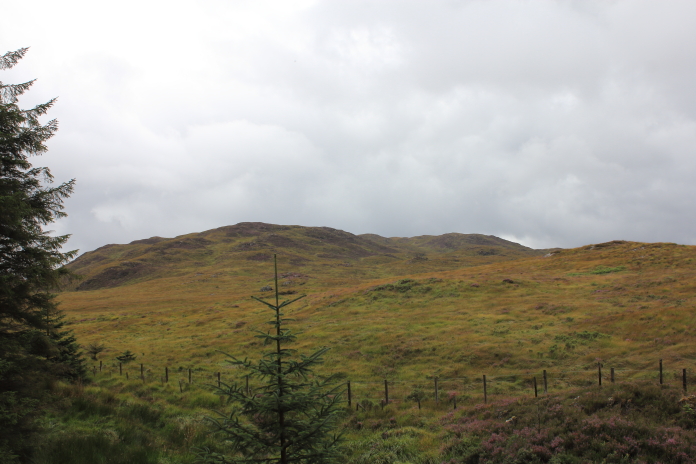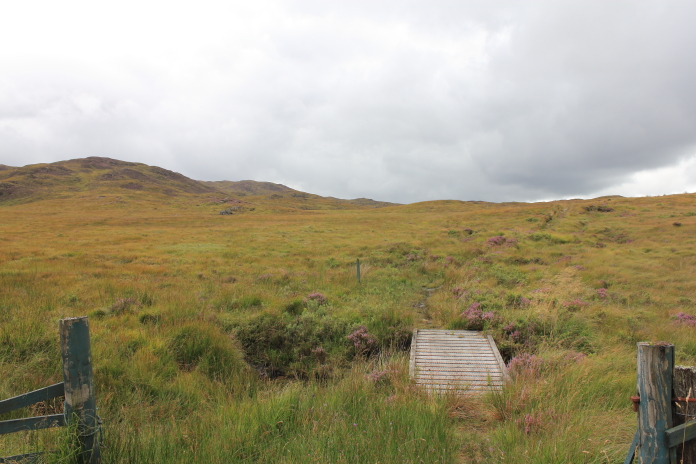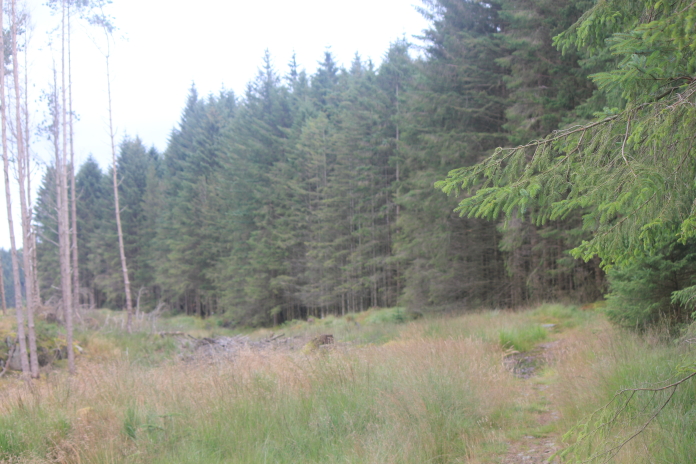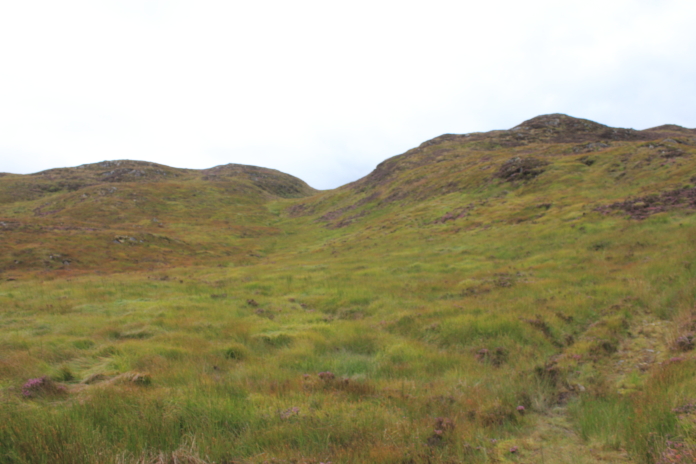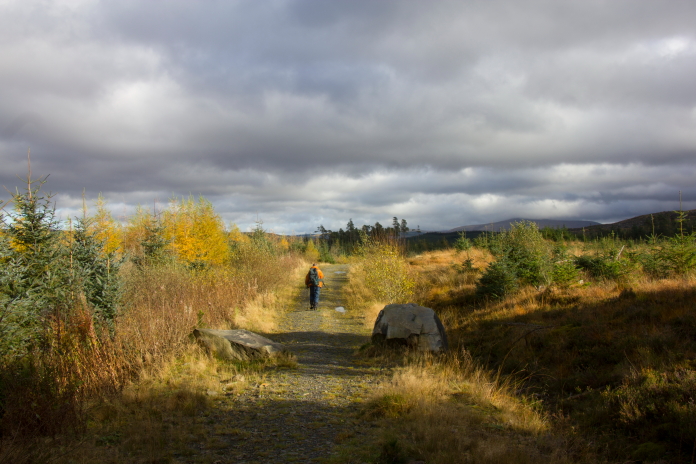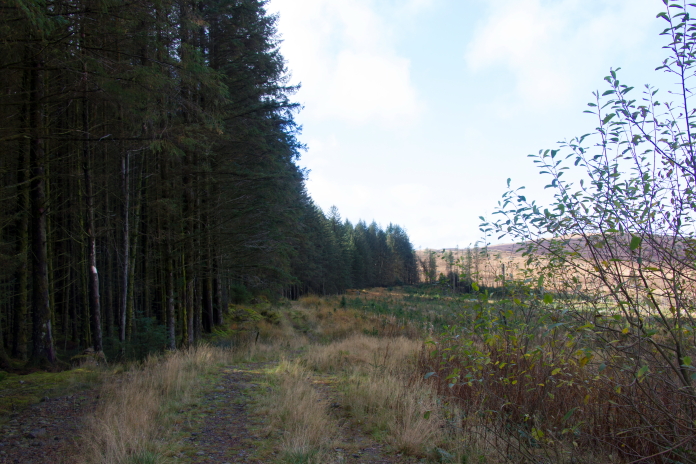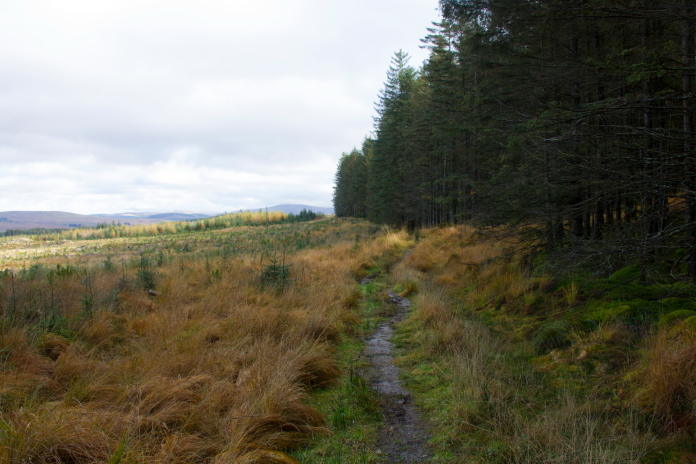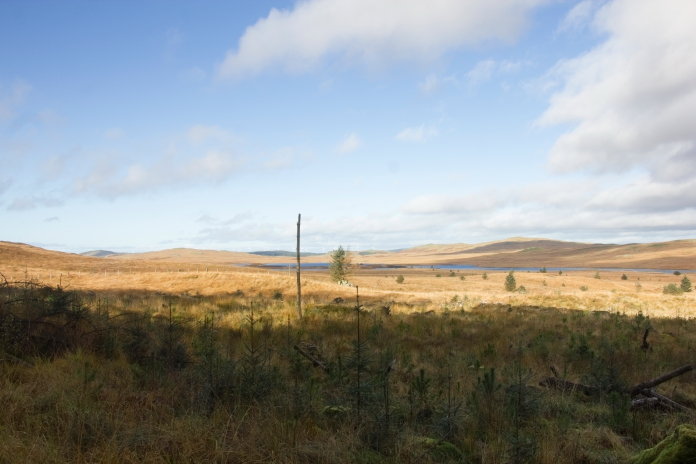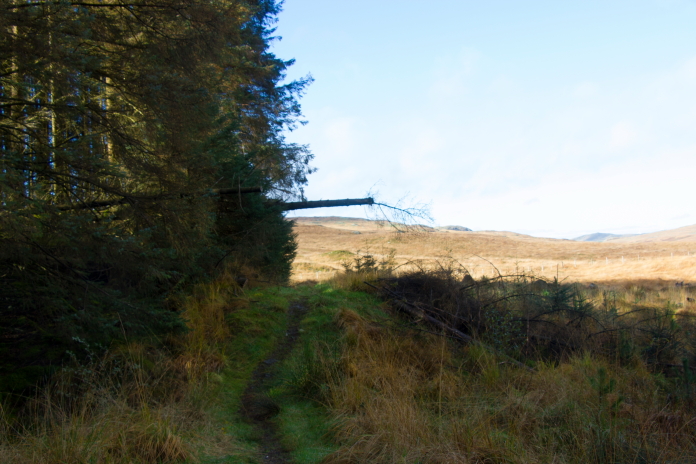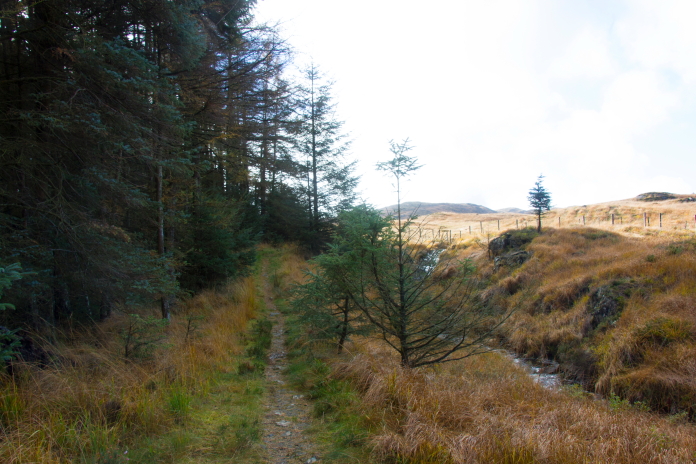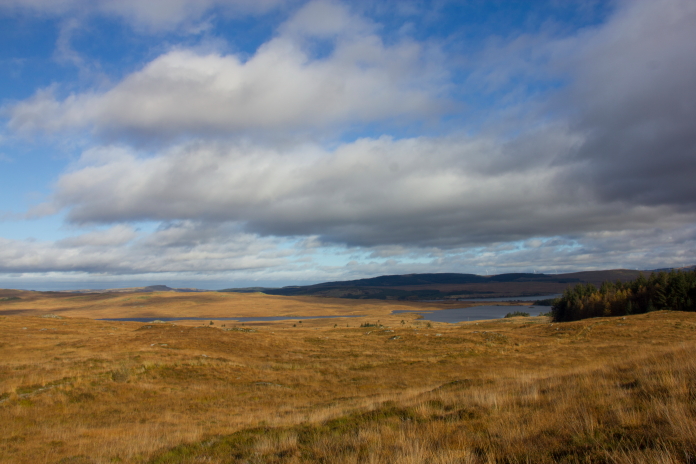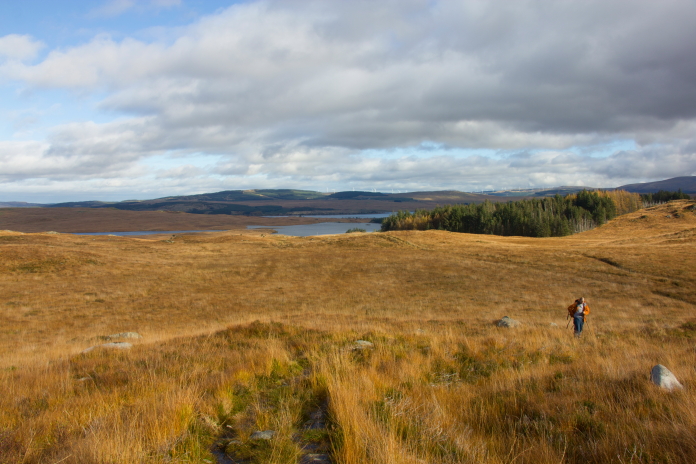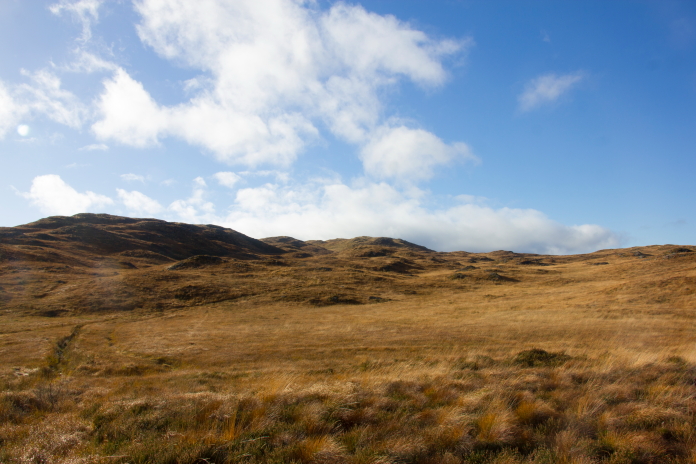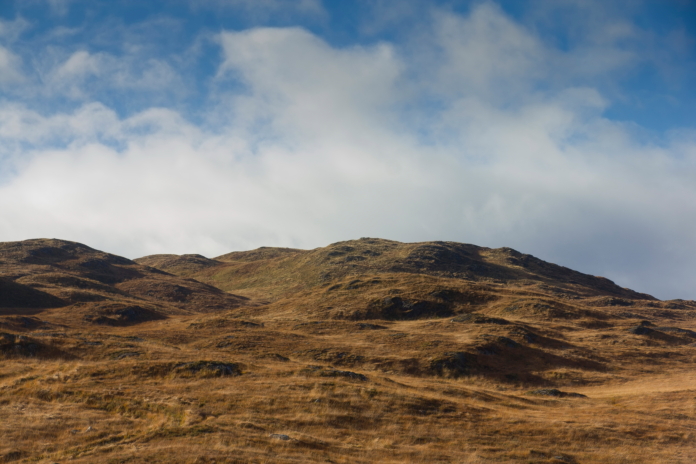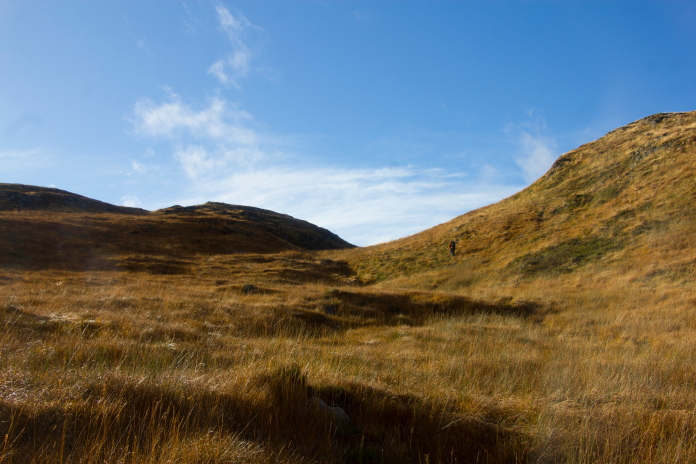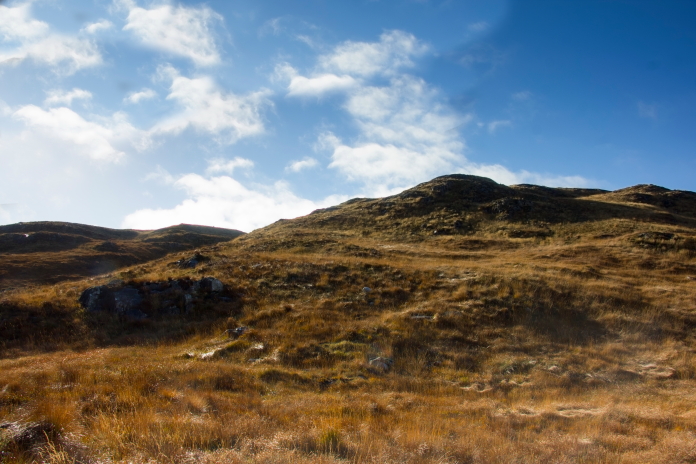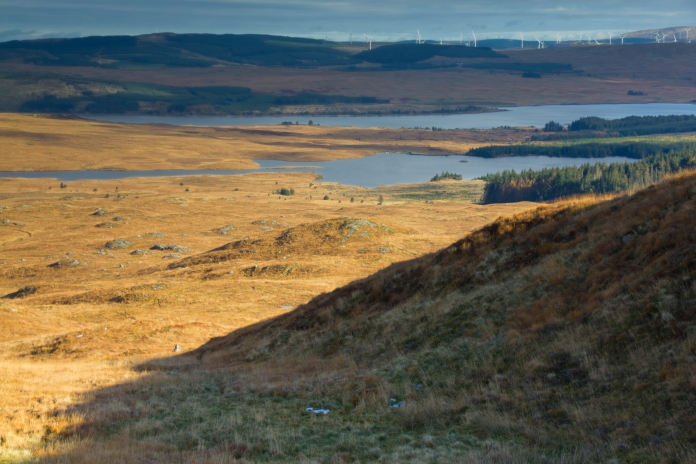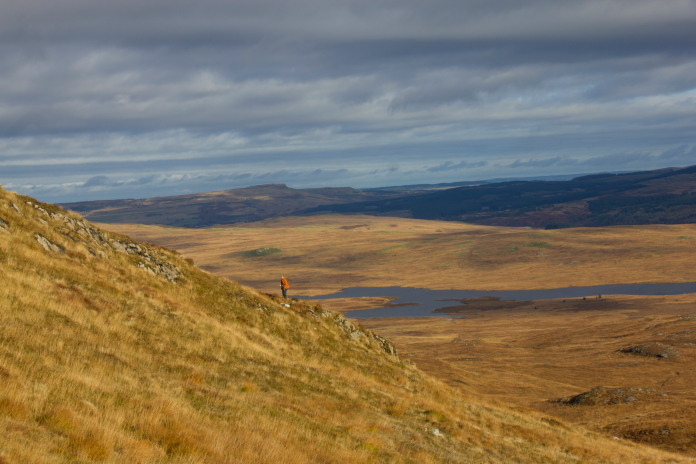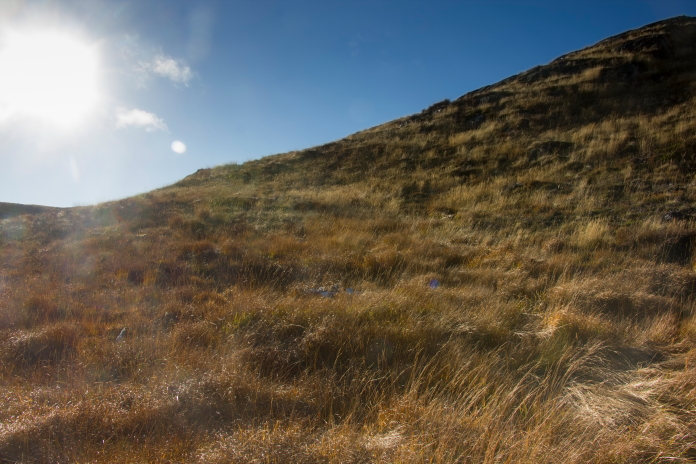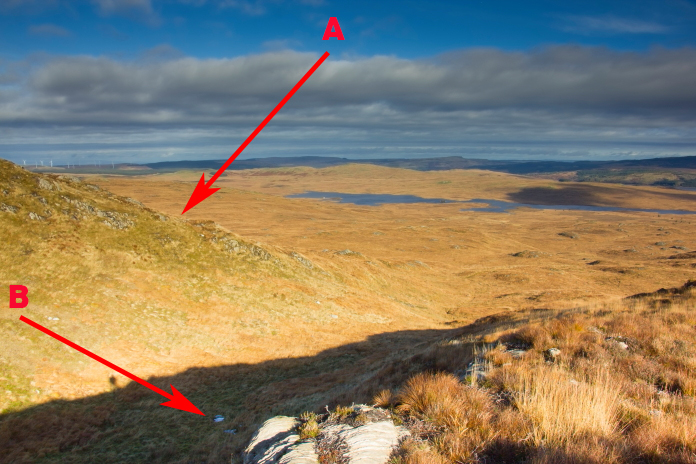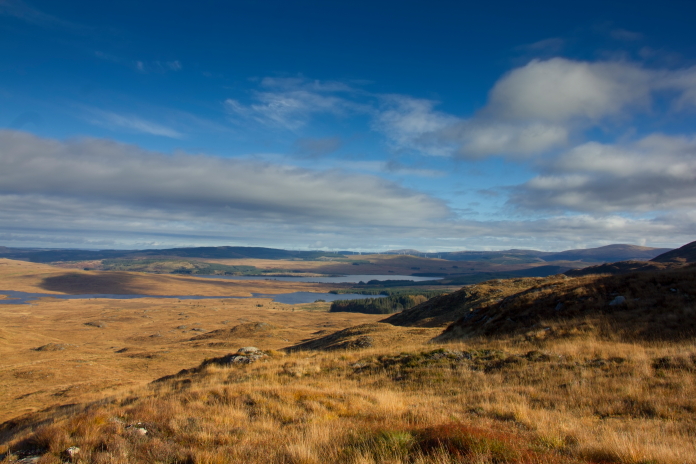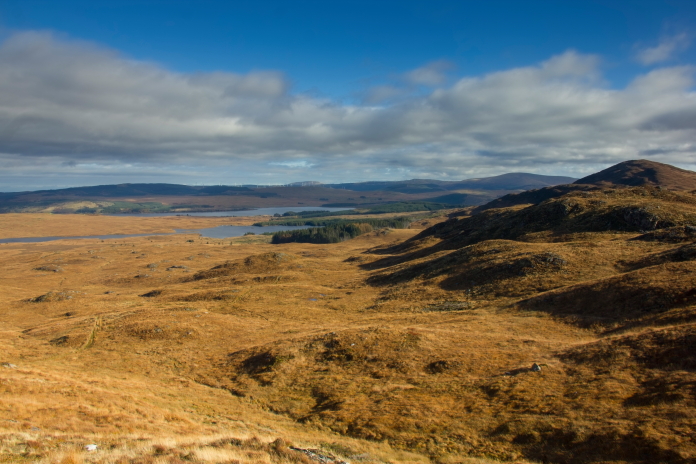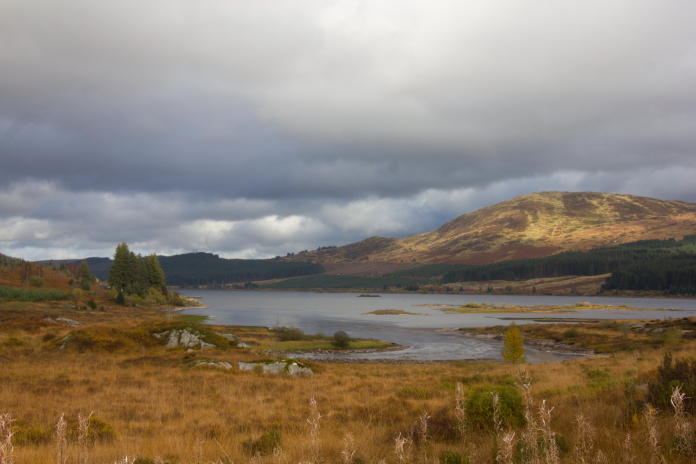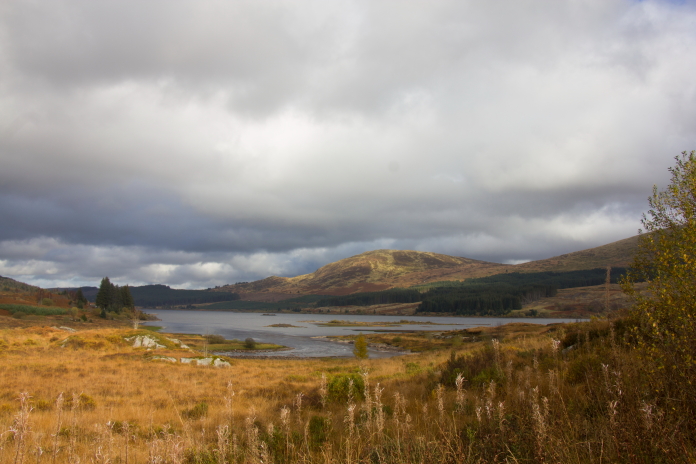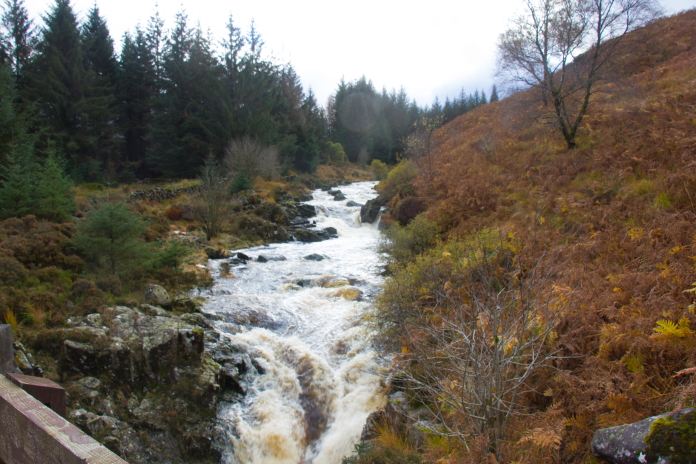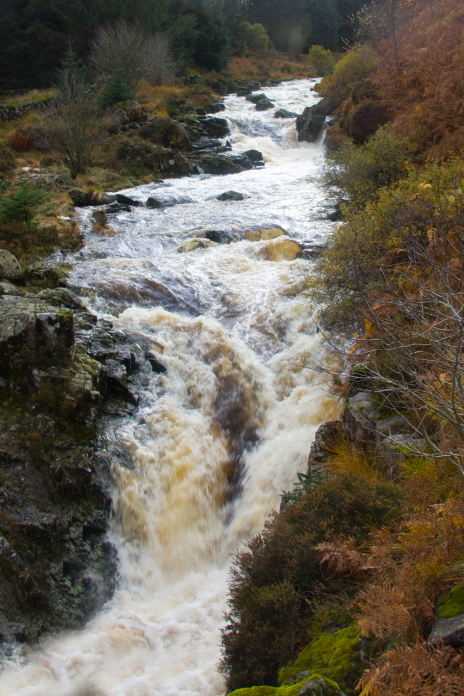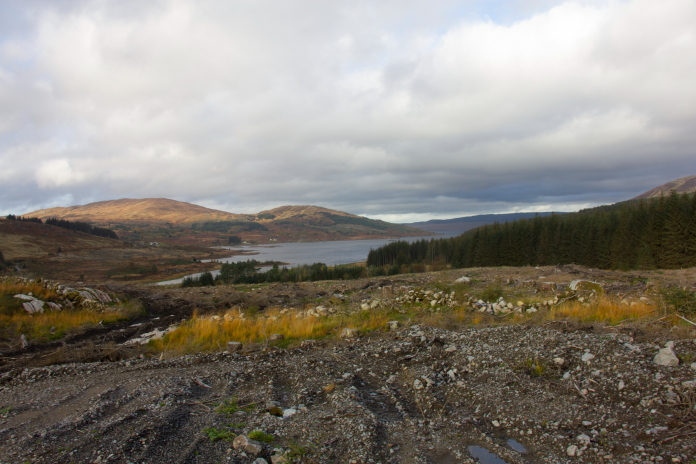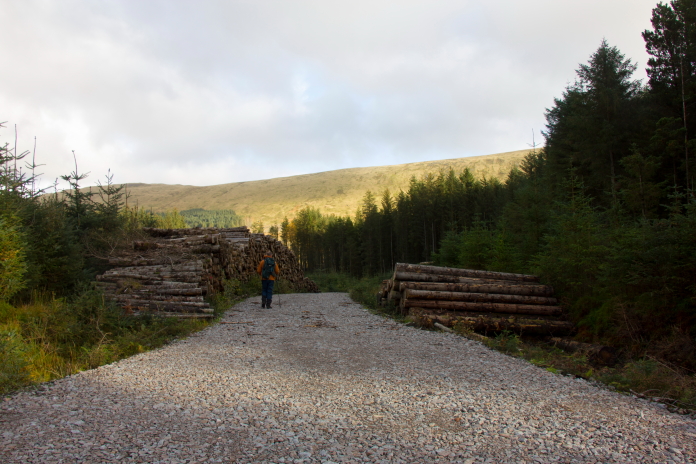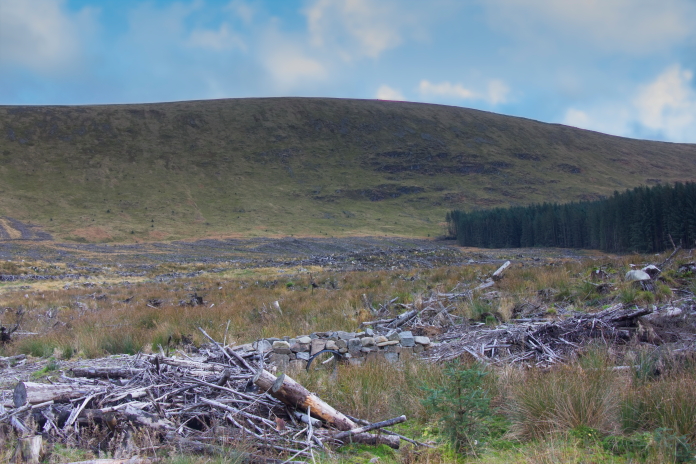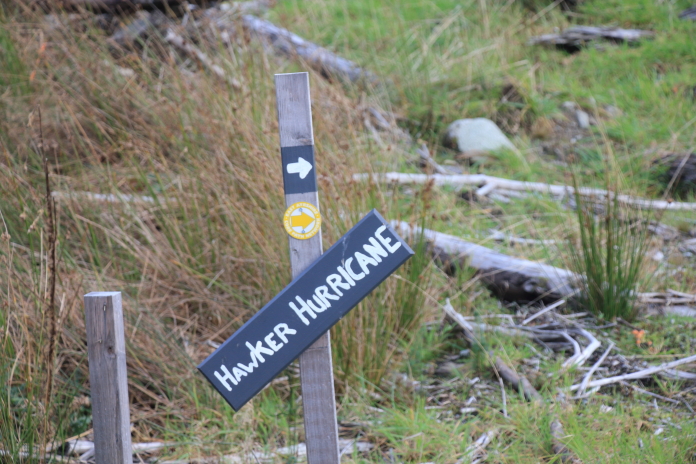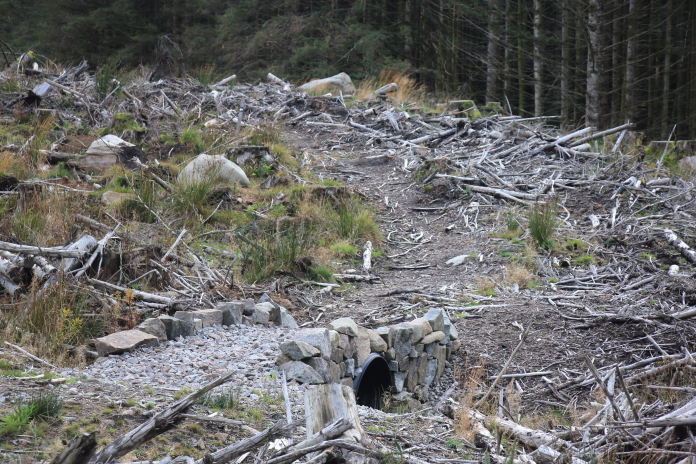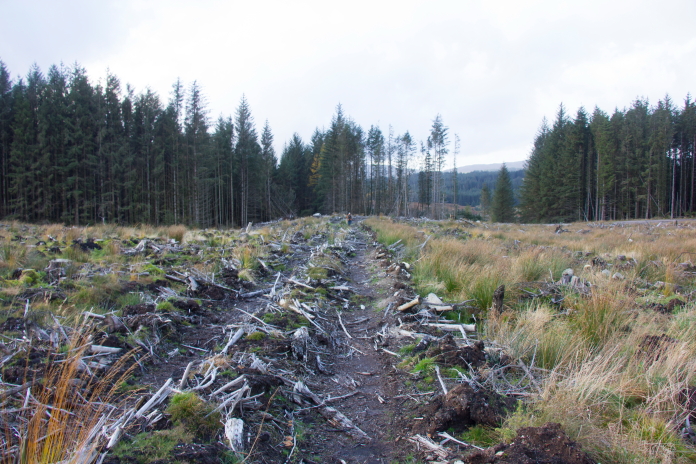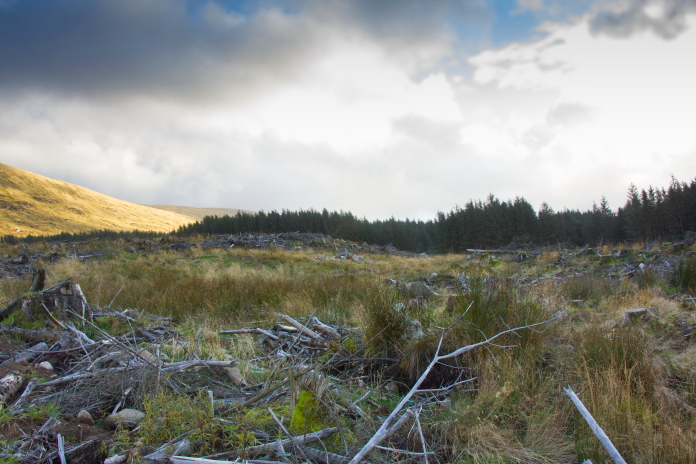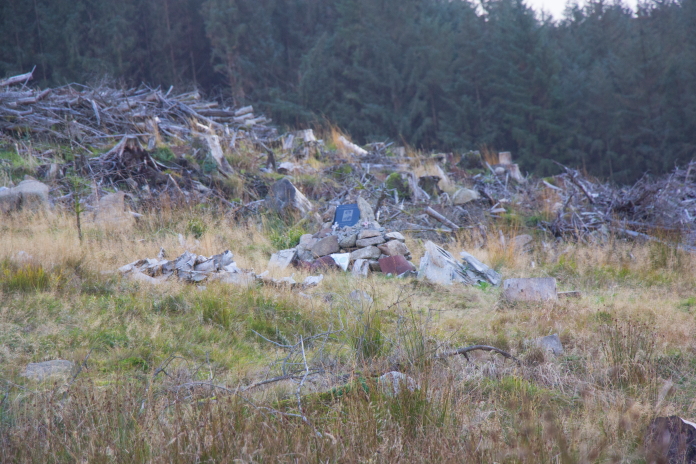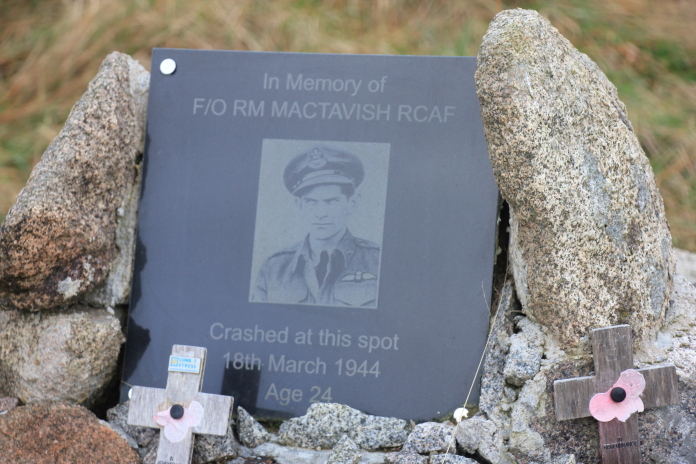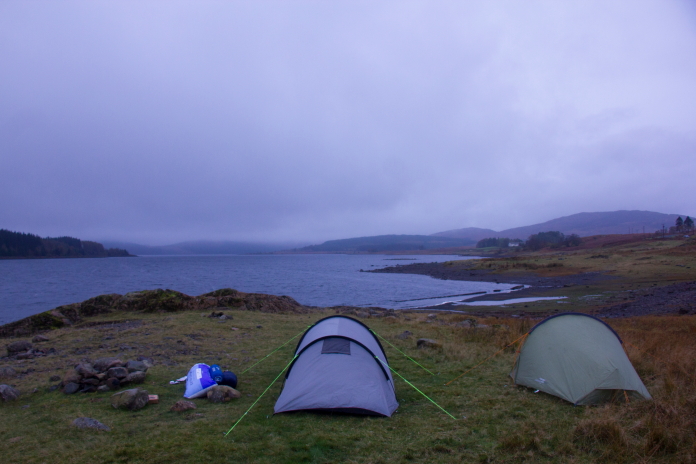Should have gone to
Specsavers..
Lockheed Hudson N7235 near Loch Braden and Hawker
Hurricane LD564 nr Loch Doon
(Distance covered =
5.9 mile/Ascent =+268m)
(Distance covered= 4.1mile /Ascent =+158m
I first went looking for the crashsite of N7235 on 20th August 2017, I spent a good few hours searching around the grid reference I had, but managed to find absolutely nothing.
As well as being in possession of a grid reference for the location of the Hudson wreckage I had also seen photos of it on the interweb. The remains were lying on a grassy slope at the edge of a wide gully, despite all this information I still ended up with an FTF!
above and below:- My faithfull old Peugeot 806, Blueberry Esmerelda Muffin II; parked next to Loch Doon at the start of the track to Loch Braden in August 2017. I still miss the old girl!
above and next 6 photos:- Making my way to the gully where I hoped to find remains of the Hudson.
Approaching the gully where wreckage of Lockheed Hudson
N7235 should lie.
In the October half term of 2022 myself and my freind Stuart hatched a plan to go and visit a very remote Vickers Wellngton crashsite on Ben Alder, near Dalwhinnie in Scotland; because of a very poor weather forecast for that area we opted for our plan B and headed over to Dumfries and Galloway instead. One of the expeditions on our Plan B was to go and have another look for N7325.
Heading off towards Loch Braden in surprisingly sunny conditions.
The night before our expedition we wild camped on the shores of Loch Doon where we were subjected to a bit of a storm during the night. This storm was similar in ferocity to the one we experienced while wild camping beside Loch Pattack on our way to vist an AW Whitley* crashsite there, ironically on that excursion we had also planned to head up to the Wellington crashsite on Ben Alder but aborted because of the weather conditions.
above and next 6 photos:-same route in 2022 and almost the same photos as my previous visit in 2017.
above and below:- approaching the gully where the Hudson remains were reported to lie, for a second time.
Stuart and his Daughter Chloe had also been here on a previous occasion but they too failed to find any sign of Hudson wreckage; perhaps because they searched further west knowing I had failed to find anything at the given grid reference. So on this visit upon reaching the gully I planned on veering off to search further east while Stuart was going to search further south.
Stuart walking up the gully to reach his search area to the south.
Heading east to my search area.
It was fortuotous that Stuart took a route up past the published grid reference for the crashsite, as that's exactly where the Hudson wreckage was all along, somehow in 2017 I had managed to walk past it several times without spotting it. I had also sat on a boulder on the other side of the gully overlooking the wreckage to eat my butties, but had still failed to spot it. The only reason for my failure I could think of is that it must have been concealed in very long grass.
Hudson wreckage; easy to spot in the winter when the grass is not so long!
Both Stuart and myself now posses metal detectors (as I received one as a christmas present in 2022). We do not use them for any form of digging, as that would require a licence from the MOD; instead we use them to find pieces hidden in the heather and also, as was the case at this site, to help figure out which direction the aircraft was travelling and where it first hit the hill.
Stuart following a trail of Metal Detector pings across the hillside to the impact point, he also found several other bits of surface wreckage on the way.
Depression on the hillside containg a lot of detector pings and a collection of surface wreckage, no pings beyond this confirmed to us this was the impact point.
The gully containing most of the wreckage is over the other side of the
ridge.
Above and below:- Arrow B is pointing to the main collection of wreckage. Arrow A is pointing to where the photo below was taken. The impact point was about 20m downhill off the left of the photo below.
Despite the atrocious weather we endured the night before our walk up to the Hudson crashsite was completed in lovely sunny weather, so instead of enduring a soaking as we were expecting and retiring straight to our tents to try and dry out we opted to go off and have a look at another crashsite that I had been to before but Stuart hadn't.
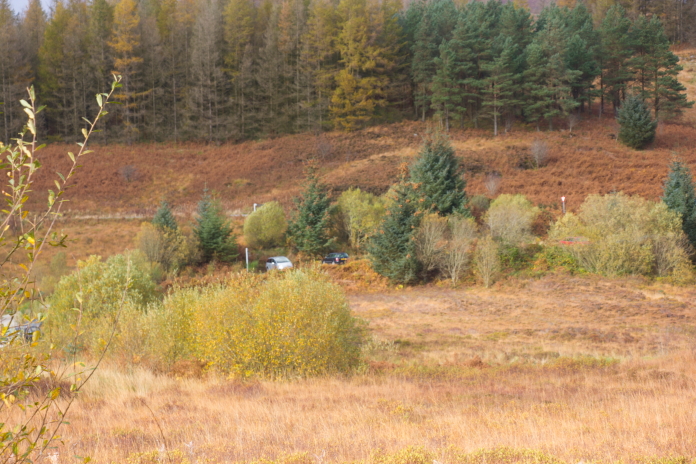
above and below:-Views up Loch Doon. In 1982 Dumfries and Galloway Museum found substantial remains of Spitfire P7540 lying on the bottom of Loch Doon.
On my first visit to the remains of Hurricane LD564 I cheated a bit and drove through an open forestry gate which halved the distance I had to walk; on this visit the gate was locked so although I'd been here before the extra distance, plus the fact the trees had all been felled, meaning we could take a more direct and a lot dryer route, culminated in a completley new walk.
Above and below:-Quite a swollen Burn, pleased there was a bridge over it!
It was quite easy going up this recentley felled section thanks to some good Harvester tracks.
Even easier going along a lovely forestry road.
The crashsite is now visible from quite a distance away.
It's in the light green patch just below centre of the photo.
Above and below:-The Forestry Company have erected a small signpost as well as constructing a path up to the Hurricane wreckage which included a small stone bridge over a burn.
It looks like a Harvester was utilised to make this section of path.
above and below:-Nearing the Hurricane remains and memorial.
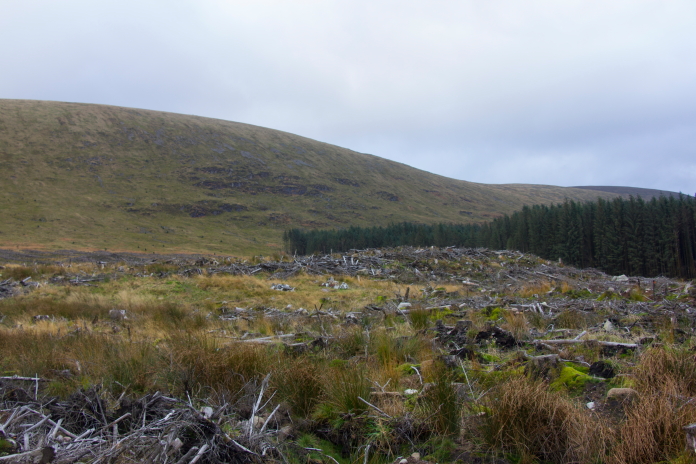
above and below:- Memorial now at the site.
